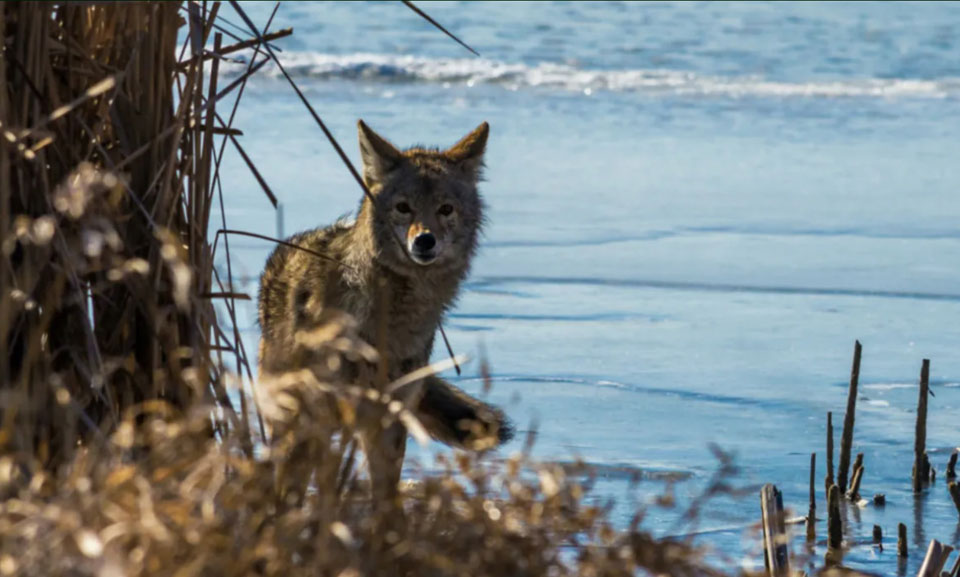WS purportedly exists “to resolve wildlife conflicts to allow people and wildlife to coexist.” But Smith explains the agency’s raison d’etre quite differently. “They are good at one thing—killing animals,” Smith told Common Dreams, adding that the program is “still operating on data and science and ideas that are 20, 30, 40 years old.”
Every year, Wildlife Services—a program within the USDA—poisons, traps, and guns down several of our nation’s most majestic animals, including wolves, bears, coyotes, and mountain lions in a futile attempt to save livestock and other “resources.” Funded with millions of taxpayer dollars, and without modern scientific support, this program uses cruel and often archaic methods to capture and kill wildlife from their native ecosystems, largely at the behest of livestock producers. Across New Mexico, Wildlife Services uses fixed-wing aircraft and helicopters to aerially shoot coyotes; body-gripping traps, neck snares and leg-hold traps to kill mountain lions, black bears, bobcats, badgers, coyotes, skunks, and swift and gray foxes; gas cartridges and poisons to exterminate coyotes, foxes, and prairie dogs in their dens; sodium cyanide M-44 devices to kill canines like foxes and coyotes; and other poisons to eliminate native birds like ravens. Family pets and federally-protected endangered and threatened species have been and will continue to be accidentally injured or killed by the agency’s indiscriminate killing methods.
The latest annual tally of the animals killed by WS—including 1,258,738 native species— drew condemnation from WildEarth Guardians, with Samantha Bruegger, the group’s Wildlife Coexistence Campaigner, saying in a statement Wednesday: “This mass slaughter is carried out in our backyards, on public lands, and in beloved parks; there is no limit to the program’s reach.”
A tweet (to the right) from New York-based Wolf Conservation Center breaks down a portion of the vast death toll detailed in the WS analysis.
The deaths often came painfully. A statement from WildEarth Guardians says, “Preferred methods include leg-hold traps, strangulation snares, aerial gunning from helicopters and planes, poison gases, and sodium cyanide bombs [M44s] placed on the landscape.”
The lawsuit portrays the annual killing deaths as folly—especially in light of the climate and ecological catastrophes as well water shortages affecting the U.S. West. Regarding beavers, Smith said the agency is “removing the very animals that will save us from these crises.”
They “act as ecosystem engineers, increasing biodiversity and ecosystem function—including filtering drinking water and removing water-borne pollutants—where they are native,” the filing states, adding:
Beavers, due to their beneficial engineering of ecosystems provide outsized ecosystem services. One study, conducted in southern Utah, a landscape analogous to much of New Mexico, found that in terms of wetland habitat only, a mere 2,560 beavers in the lower Escalante River basin would provide $275.5 million dollars per year in wetland habitat services. If riparian and aquatic habitat services are added to that number, it becomes nearly $450 million dollars per year. […] Beavers particularly can have remarkable impacts on reforestation in areas affected by wildfires.
Benefits from other animals further prove the misguided annual kills, the filing states:
For example, it is now well established that killing predators such as coyotes, mountain lions, and bears create conditions favorable for pandemics to emerge, diminish ecosystem functions, reduce carbon sequestration, and increase instances of irruptions of invasive species, and cost taxpayers millions—and perhaps billions—of dollars in lost ecosystem services… In an arid region such as New Mexico, which is undergoing rapid ecological changes from climate disruption, it is more important than ever that Wildlife Services takes a hard look at the environmental consequences of removing so many animals critical to regulating ecosystems.
Another conservation group, the Center for Biological Diversity, offered similar condemnation Wednesday, characterizing the program as both barbaric and needless.
“Year after year Wildlife Services continues to needlessly kill wildlife, even though effective tools exist to prevent most conflicts,” said Collette Adkins, carnivore conservation director at the Center.
“The scientific consensus is that killing carnivores like coyotes to benefit the livestock industry just leads to more conflicts and more killing,” she said, adding, “This taxpayer-funded slaughter needs to stop.”
This article was reposted from Ecowatch, via Common Dreams.











